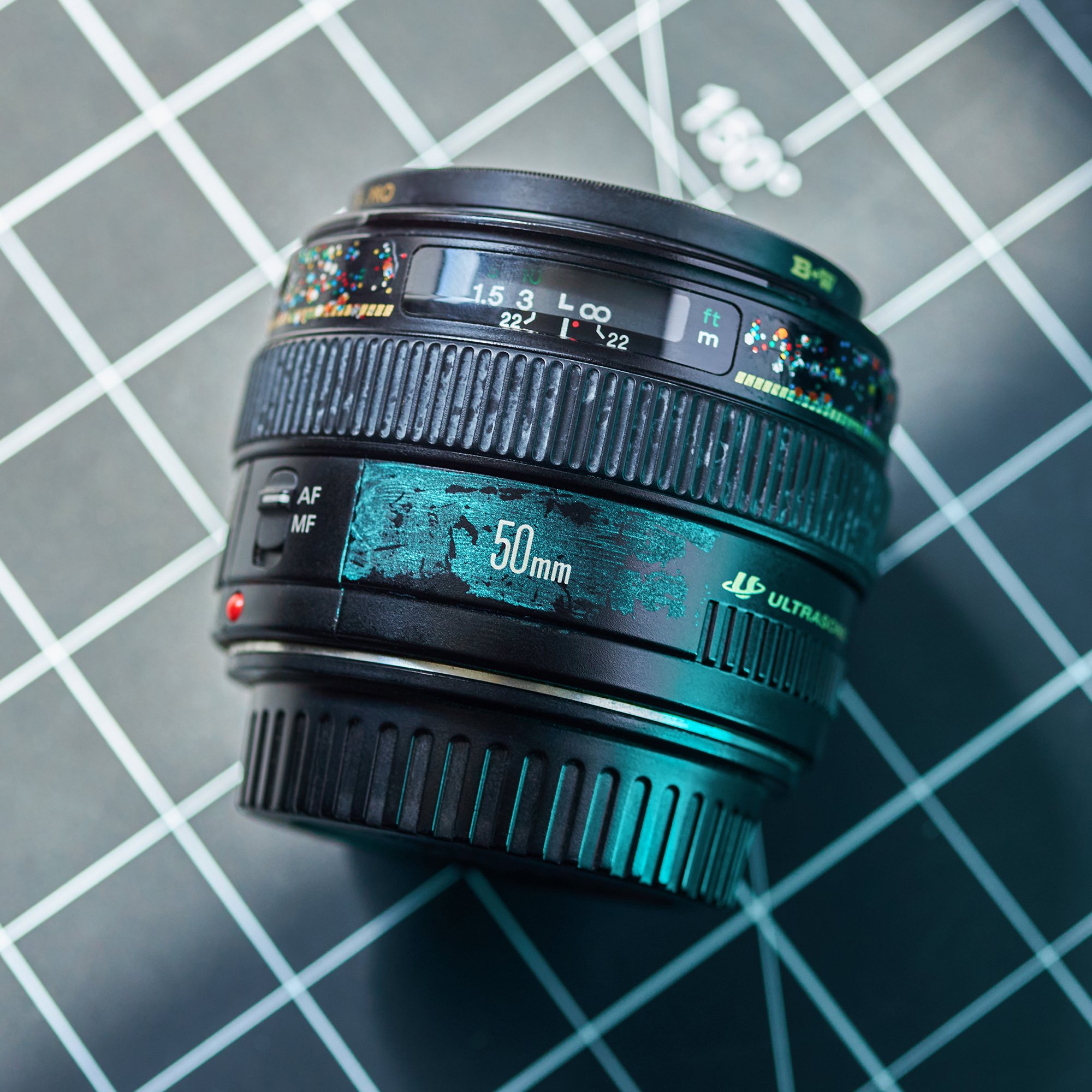Lens Review - Canon EF 50mm f1.4 USM
Canon EF 50mm f1.4 USM
The Canon EF 50mm f1.4 USM lens is a popular prime lens known for its good image quality and versatility. It’s loved by portrait photographers because of its soft-sharpness if that makes sense. It has a unique ability to capture a lot of contrast which makes images appear sharp but lacks micro contrast allowing skin tones to render smoothly. This is why it was prized by portrait photographers. With a wide aperture of f1.4, this lens excels in low-light conditions, allowing photographers and videographers to capture images with beautiful background blur. The ultrasonic motor (USM) provides fast and quiet autofocus, making it ideal for both still photography and video recording. Its compact and lightweight design adds to its appeal, making it a favorite among photographers for everyday use and creative endeavors. Whether you're a professional or an enthusiast, the Canon EF 50mm f1.4 USM lens is a reliable and versatile tool that delivers beautiful results.
LENS SPECS
Release Date: 1993
Format: 35mm
Mount: EF
Filter: 58mm
Aperture Blades: 8
Aperture Range: f1.4 - f22
Min Focus Distance: 0.45m
Weight: 290g
Lens IS: No
Weather Sealing: No
Optical Design: 7 elements in 6 groups
APS-C Conversion Approx.: 80mm
Design and Build Quality
The Canon EF 50mm f1.4 USM lens features a classic design that reflects its 1993 origins, combining functionality with a compact form factor. The lens body is primarily constructed from high-quality plastics, giving it a lightweight feel, while the metal mount adds durability. Its straightforward, streamlined silhouette includes a well-proportioned focus ring that provides smooth manual focusing, enhancing user control. Despite its robust design, some users find that the lens lacks the premium feel of more modern counterparts, particularly in terms of tactile feedback. The overall build quality is solid for everyday use, but it doesn't offer the same level of weather resistance or ruggedness as newer lenses designed for professional outdoor shooting. Nevertheless, the EF 50mm f1.4 remains a reliable choice for photographers seeking an affordable and effective prime lens.
Special Features
As far as special features go there isn’t much to note. It does have a Gaussian optics design which I’ll talk about in the optical performance section. The green paint and sparkles on the lens aren’t stock. I did that mostly out of boredom. Creative are going to be creatives what can I say.
Gear Shots
Focusing
Auto focus and eye tracking with this lens on modem mirrorless cameras like the EOS R5 Mark II work without issue. I had no problem tracking eyes even at f1.4. I was able to take portraits and track my models without worry. However I will note that when tracking eyes on subjects at f1.4 when the subject was 20 feet away from me I did find that I got a few out of focus shots. But at the same time shooting portraits of someone 20 feet away with a 50mm isn’t something you would typically do and if you were shooting landscapes or architecture you’d stop the lens down to f8. So take that flaw as you wish.
Optical Performance
The Canon EF 50mm f1.4 USM features a Gaussian optics design, which, in it’s time, was instrumental in delivering exceptional image quality. This design employs a specific arrangement of lens elements that helps to minimize various optical aberrations, particularly spherical distortion. By incorporating aspherical elements, the lens effectively reduces distortion and enhances sharpness across the frame. As a result, images exhibit a pleasing consistency in clarity and detail, making the lens particularly well-suited for portraiture work where sharpness and smooth bokeh are crucial. Additionally, the Gaussian design contributes to excellent contrast and color rendition, allowing for vibrant, lifelike images.
That’s the marketing jargon anyway but what does it all mean compared to modern RF lenses? I haven’t had a chance to play with the new RF 50mm f1.4 yet, but as the new lens is an L lens I expect it to be far better optically and also cost a lot more too. When it comes to price this EF 50mm f1.4 is more in line with the RF 50mm f1.8. The RF 50mm f1.8 is sharper and cleaner however since the RF 50mm f1.8 saves on production cost by using acrylic elements in it’s optical design I find that the EF 50mm f1.4 provides more pleasing out of focus areas. For example the transition from focused area to blurred area is lot smoother.
Chromatic aberrations are quite noticeable with this lens, which may be due to my use of a high-resolution 45-megapixel sensor. High-resolution sensors tend to amplify any imperfections in a lens, and the RF 50mm f1.4 doesn’t quite match the performance of L-series lenses. On my R5 Mark II, I often see significant purple and green fringing in images. If you’re shooting with a sensor that has less than 30 megapixels, you’ll likely achieve better results with this lens.
Another thing to note is that lenses from the 90s were never sharp wide open and this EF 50mm f1.4 is no exception. Stopping it down will improve image quality. That being said here is a 100% crop taken from a portrait shot at f1.4. The optical performance is pretty good wide open. You can’t count every hair in the model’s eyebrows like you would be able to with the RF 50mm f1.2 L but there is a certain softness and appeal to the image. Once you shrink your image down for social media or web the whole image sharpens up anyway. So is it really a big deal?
For those of you who are into bokeh this lens has a maximum aperture of f1.4 which allows it to get a really nice soft bokeh. Light circles towards the middle are round but they quickly stretch out as you move towards the edge of the frame.
User Experience
The Canon EF 50mm f1.4 is a versatile lens, ideal for a range of styles and subjects, from portraits to landscapes. While it may not offer standout features, it delivers a fun shooting experience and captures images with a nostalgic 90s vibe. It's worth noting that it's not the most compact option in the sub-$200 price range; the RF 50mm f1.8 is smaller and lighter, making it a better travel companion. However, the EF 50mm f1.4 can produce exceptional images in the right lighting conditions, often outperforming the newer RF 50mm f1.8. That said, the RF lens benefits from improved optical coatings, which enhance its performance in challenging light. Both lenses are similarly priced, which is why they’re often compared. Additionally, if you're using a modern mirrorless camera, you'll need an EF to RF adapter for the older lens, which adds to the overall cost. Nevertheless, once you have the adapter, it opens up opportunities to use other EF lenses with excellent optical quality, providing great value for your investment.
Sample Photos
Final Thoughts
While this is ultimately a matter of personal taste, I find that the Canon EF 50mm f1.4 embodies a touch of vintage charm that I truly appreciate. This characteristic is one of the main reasons I still enjoy shooting with it today. If you share a fondness for that classic lens aesthetic, this lens might be worth a try. Its qualities can add a unique character to your images, making it a compelling option for those looking to explore the past while enjoying modern photography.











































































